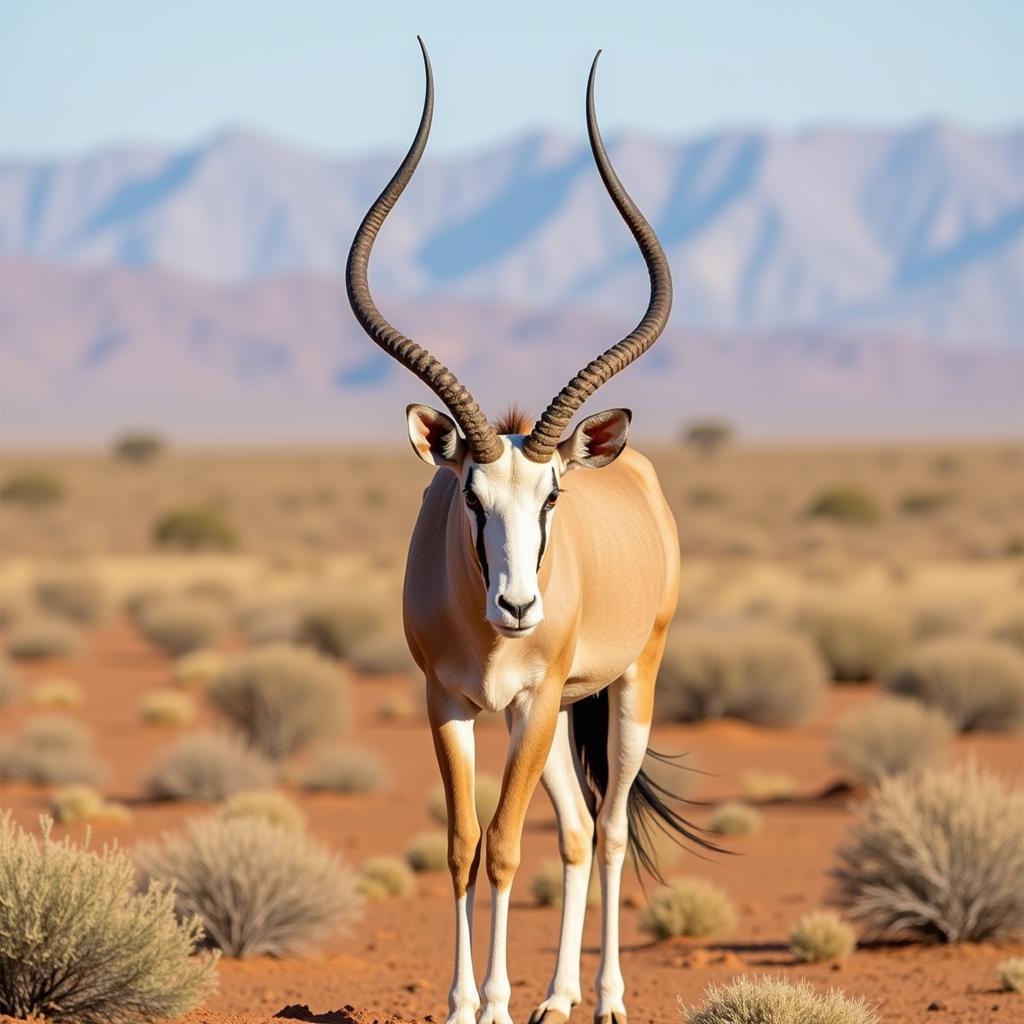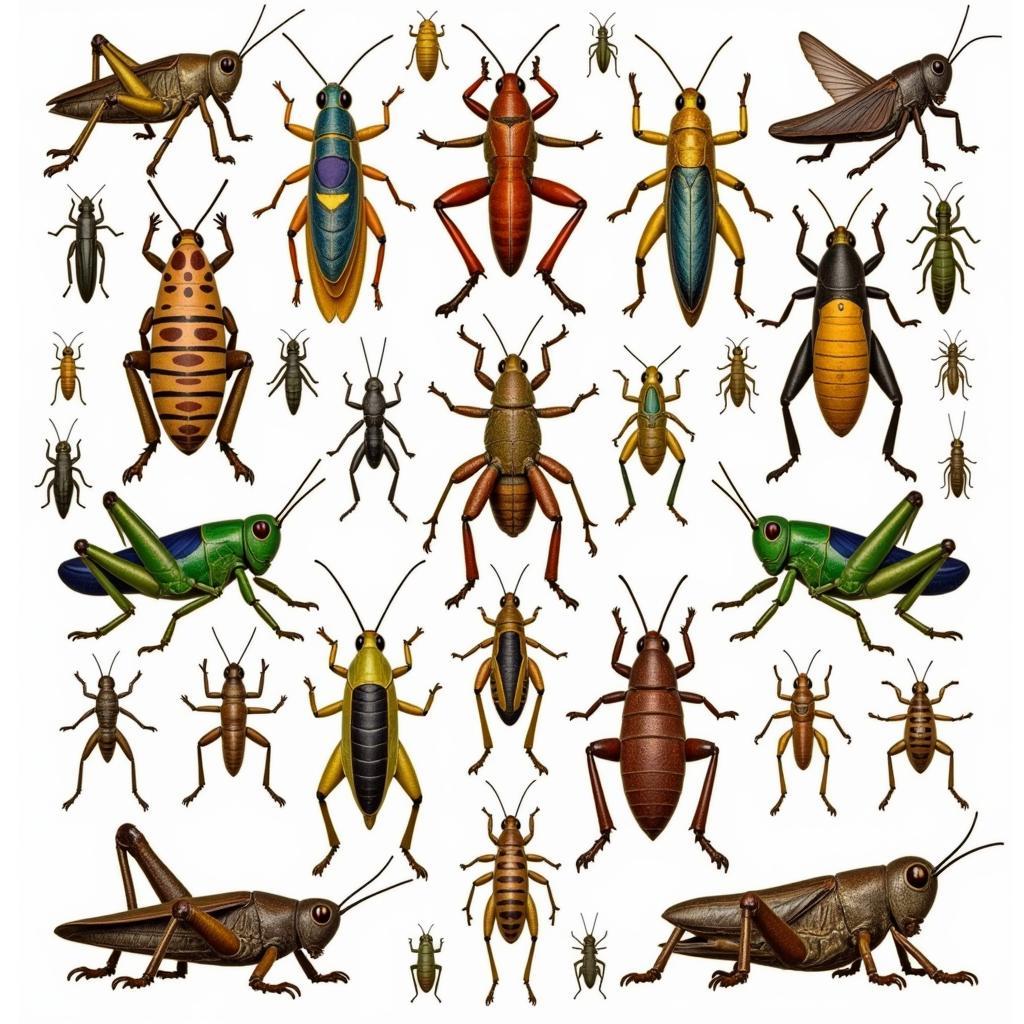African Desert Biome Animals: Surviving the Extremes
The African desert biome, a land of scorching sun and limited water, might seem inhospitable at first glance. Yet, it teems with life, showcasing nature’s resilience at its finest. The animals that call these arid landscapes home have developed fascinating adaptations to thrive in the face of extreme temperatures, scarce resources, and relentless predators.
 African oryx with long horns standing in the desert
African oryx with long horns standing in the desert
Mastering the Art of Survival: Adaptations for a Challenging Environment
Life in the African desert demands resourcefulness. Animals have evolved remarkable physiological and behavioral adaptations to survive. For instance, many, like the fennec fox with its oversized ears, are nocturnal. This behavior allows them to avoid the scorching daytime heat and hunt when temperatures are cooler.
Water conservation is another crucial aspect of desert survival. Some animals, like the iconic desert-dwelling camel, can endure long periods without drinking, while others, like the thorny devil lizard, obtain moisture from the food they consume or even absorb it through their skin.
 A camel standing in the African desert
A camel standing in the African desert
A Glimpse into the Diverse Cast: Iconic African Desert Biome Animals
The African desert biome boasts a surprisingly diverse array of animal life. Each species plays a crucial role in maintaining the delicate balance of this ecosystem.
The Resilient Herbivores
From the majestic scimitar-horned oryx to the nimble gazelle, herbivores are integral to the desert’s food web. These animals have adapted to thrive on the sparse vegetation, often traveling long distances in search of sustenance. The addax antelope, for example, possesses specially adapted hooves that allow it to navigate the sandy terrain with ease, while its efficient digestive system extracts maximum moisture from its diet.
The Stealthy Predators
Where there are herbivores, there are predators, each with its unique hunting strategy. The cheetah, renowned for its incredible speed, relies on short bursts to catch its prey, while the cunning hyena employs a combination of strength and scavenging tactics. The venomous puff adder, a master of camouflage, lies in wait, its presence almost undetectable until it strikes with lightning speed.
The Smaller Inhabitants: A World of Adaptation in Miniature
Beyond the larger animals, a plethora of smaller creatures contribute to the desert’s biodiversity. Insects like the Namib Desert beetle, with its unique ability to harvest fog for drinking water, showcase nature’s ingenuity. Reptiles like the shovel-snouted lizard, adept at “swimming” through sand, demonstrate remarkable adaptation to the desert’s shifting landscape.
Facing the Future: Conservation Efforts and the Impact of Climate Change
While the animals of the African desert have shown remarkable resilience, they face increasing threats from habitat loss, climate change, and human encroachment. Conservation efforts are crucial to ensure the survival of these unique species and preserve the delicate balance of this extraordinary ecosystem.
Conclusion
The African desert biome, though harsh, is a testament to the power of adaptation and the interconnectedness of life. Understanding the animals that inhabit these arid landscapes offers a glimpse into the wonders of evolution and emphasizes the importance of protecting these fragile ecosystems for generations to come.
FAQs
What is the hottest African desert?
The hottest African desert is the Sahara Desert, with temperatures often exceeding 122°F (50°C).
What is the largest animal in the African desert?
The African bush elephant, while not exclusively a desert animal, is the largest animal found in some African deserts, including the Namib Desert.
How do animals survive in the African desert without water?
Animals have evolved various adaptations to survive with limited water, such as getting moisture from food, minimizing water loss, and being active during cooler hours.
Do you want to know more?
Explore the fascinating world of African big biobs and delve deeper into the wonders of the continent’s biodiversity.

